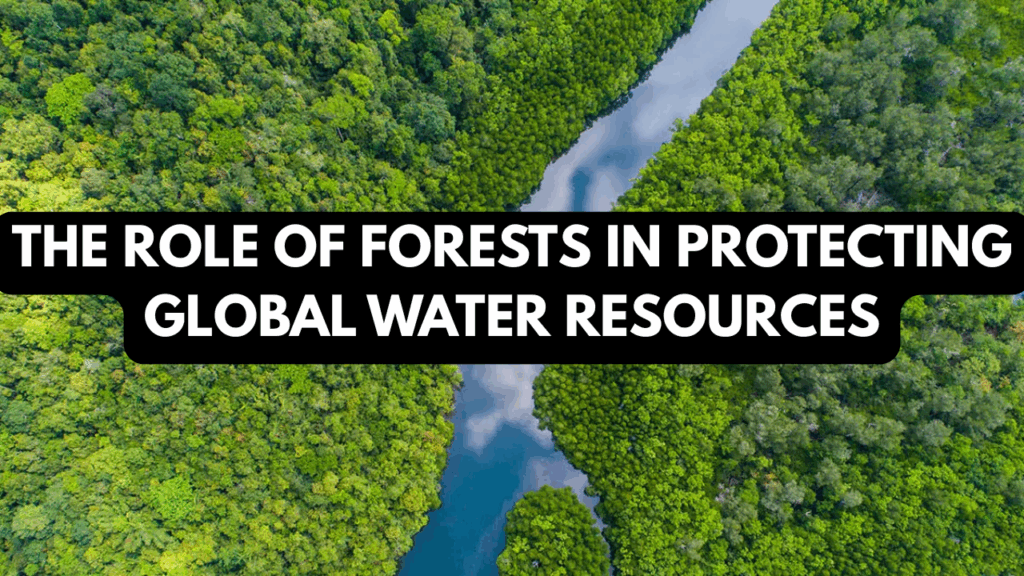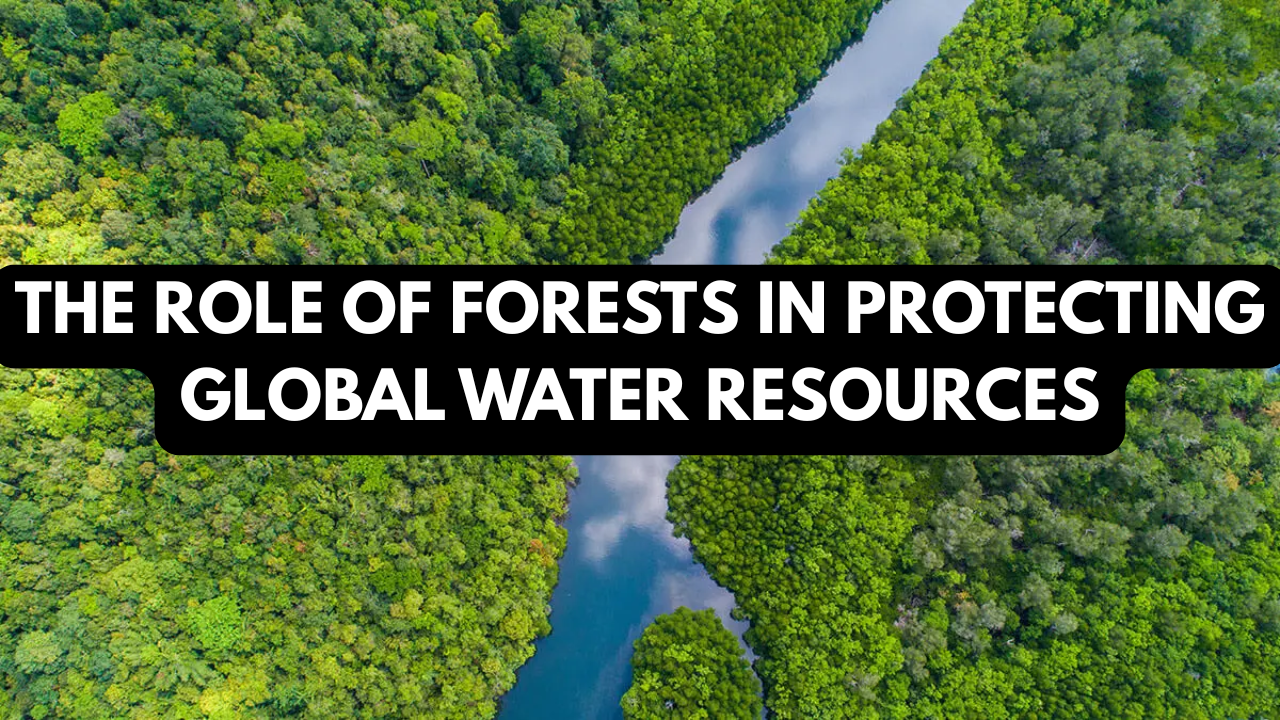
Forests are often admired for their beauty, biodiversity, and ability to capture carbon, but one of their most overlooked roles is in protecting and regulating the world’s water resources. From the Amazon to the Himalayas, forests act as nature’s water towers—filtering, storing, and distributing fresh water to billions of people and countless ecosystems. Without healthy forests, the global water cycle would collapse, threatening agriculture, urban water supplies, and even climate stability.
This article explores how forests protect water resources, the threats they face, and the solutions needed to safeguard these natural guardians of our planet’s water.
How Forests Safeguard Global Water Resources
Forests influence the water cycle at every stage—through rainfall, absorption, filtration, and release. They are not just passive landscapes but active regulators of water quality and quantity.
1. Rainfall Regulation
Forests release water vapor into the atmosphere through evapotranspiration, helping form clouds and rainfall patterns. Tropical forests like the Amazon generate much of their own rain, fueling regional and even global precipitation.
2. Water Filtration
Tree roots, soil, and forest vegetation filter out pollutants, ensuring that rivers and groundwater remain clean. Many major cities, including New York, rely on protected forests for their drinking water supply.
3. Flood and Drought Control
Forests act as sponges, absorbing excess rain during storms and releasing it slowly during dry seasons. This stabilizes river flows and prevents both floods and droughts.
4. Groundwater Recharge
Tree roots and porous forest soils help water infiltrate deep underground, replenishing aquifers that supply fresh water to millions.
5. Erosion Prevention
Forests protect against soil erosion, preventing sediment from clogging rivers, reservoirs, and dams.
The Global Threats to Forests and Water Resources
Despite their importance, forests are being destroyed at alarming rates. When forests disappear, the water cycle becomes unstable, and water supplies dwindle.
- Deforestation for agriculture – Large-scale clearing for crops like soy, palm oil, and cattle ranching reduces rainfall and water storage.
- Urban expansion – Replacing forests with concrete surfaces prevents natural water infiltration.
- Logging and mining – Destroys soil structure, increases runoff, and contaminates rivers.
- Climate change – Alters rainfall patterns, reducing forests’ ability to sustain water cycles.
- Forest fires – Rising global temperatures and land mismanagement cause fires that strip soil and reduce water retention.
Table: How Forests Protect Water Resources
| Forest Function | Water Benefit | Global Impact |
|---|---|---|
| Rainfall regulation | Generates and stabilizes rain cycles | Supports agriculture and ecosystems |
| Water filtration | Removes pollutants and sediments | Clean drinking water for cities |
| Flood control | Absorbs excess rainwater | Reduces flood disasters |
| Drought resilience | Releases stored water gradually | Sustains rivers during dry seasons |
| Groundwater recharge | Replenishes aquifers | Long-term water supply for communities |
| Soil protection | Prevents erosion and sediment buildup | Keeps reservoirs and rivers functional |
Case Studies: Forests and Water Security
- The Amazon Rainforest – Known as the “flying rivers,” the Amazon generates massive rainfall through evapotranspiration. Deforestation threatens this cycle, endangering water supplies across South America.
- New York City Watershed – Instead of building a costly filtration plant, NYC invested in protecting the Catskill forests. These forests naturally filter the city’s drinking water, saving billions of dollars.
- Himalayan Forests – Forests in the Himalayas regulate glacial melt and rainfall, providing fresh water to millions across South Asia. Deforestation here threatens both rivers and food security.
Protecting Forests to Secure Water
To maintain water security, forest conservation must be prioritized alongside climate policies. Some key strategies include:
- Sustainable land use – Encouraging agroforestry and reducing large-scale deforestation.
- Watershed protection – Conserving forests near rivers, lakes, and water reservoirs.
- Reforestation projects – Restoring degraded lands to revive rainfall and water storage.
- Community involvement – Engaging local populations in forest stewardship.
- Stronger policies – Enforcing anti-logging laws and incentivizing sustainable forestry.
Overview Table
| Action | Water Resource Benefit | Long-Term Outcome |
|---|---|---|
| Stop deforestation | Stabilizes rainfall | Prevents water scarcity |
| Reforest degraded lands | Improves infiltration & recharge | Restores aquifers |
| Protect urban watersheds | Natural filtration | Clean drinking water |
| Sustainable agriculture | Reduces runoff and erosion | Healthy rivers and soils |
| Fire prevention strategies | Conserves soil moisture | Protects biodiversity and water reserves |
| Community forest management | Encourages local stewardship | Lasting conservation and resilience |
Final Thoughts
Forests are far more than carbon sinks—they are the beating heart of the planet’s water cycle. By regulating rainfall, filtering pollutants, and replenishing aquifers, they sustain billions of lives. Yet deforestation and mismanagement continue to erode these natural systems.
If the world wants to secure a reliable and clean water future, protecting forests is non-negotiable. Conserving and restoring forest ecosystems is not just an environmental priority—it’s a survival strategy.
FAQs
Q1: Why are forests called “water towers of the Earth”?
Because they store, filter, and release water, regulating supplies for people and ecosystems.
Q2: How does deforestation affect rainfall?
It reduces evapotranspiration, disrupting rainfall patterns and worsening droughts.
Q3: Can reforestation really improve water availability?
Yes, planting trees restores infiltration, groundwater recharge, and rainfall stability.

